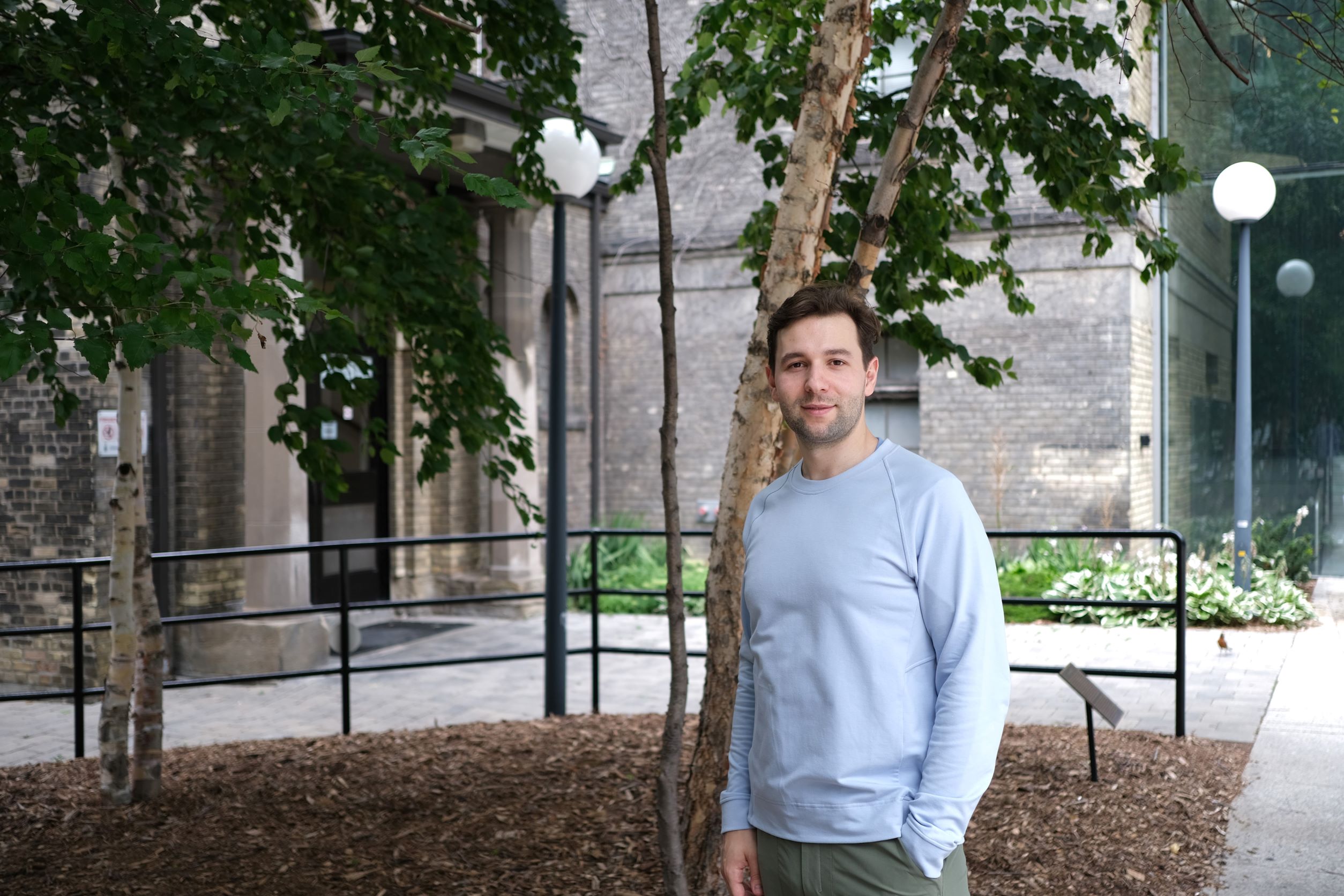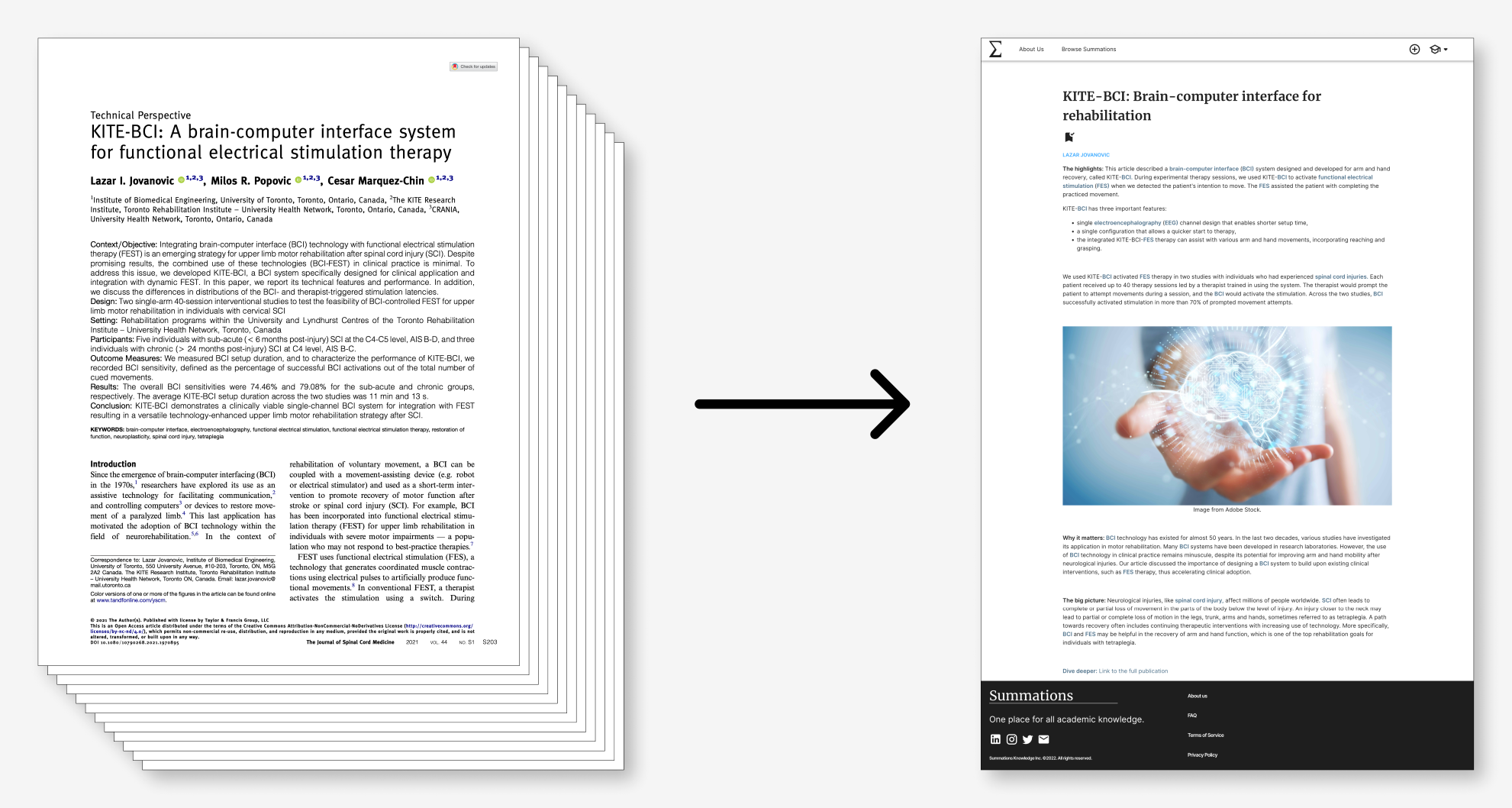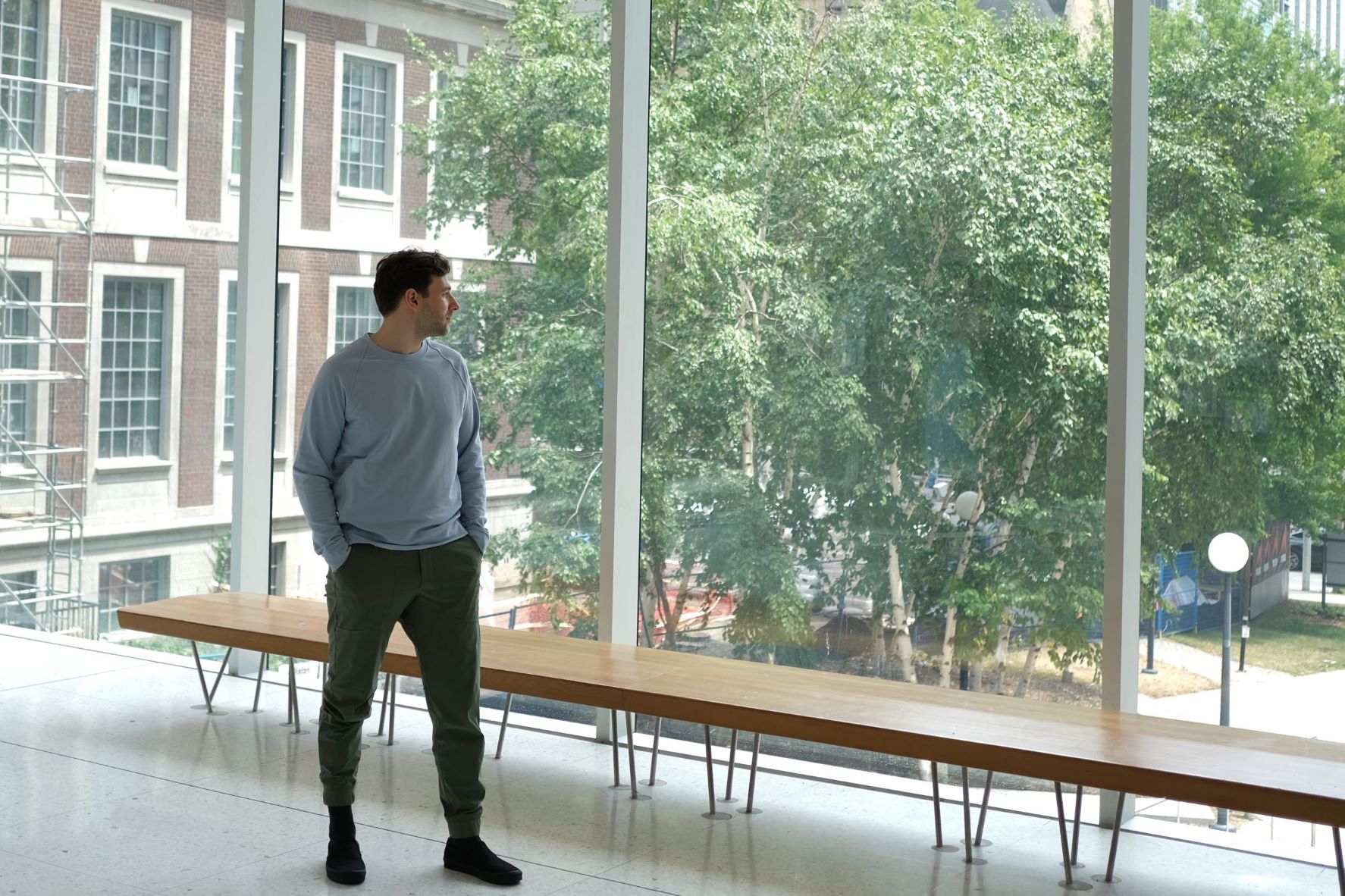Originally from Belgrade, Serbia, Dr. Lazar Jovanovic developed an early interest in human-machine interfacing. Graduated from biomedical engineering in 2021 under the supervision of Drs. Milos Popovic and César Márquez-Chin, Lazar worked on brain-computer interface-controlled stimulation therapy to help individuals who have suffered a stroke or spinal cord injury recover arm and hand movements. Now, Lazar is developing a platform, Summations, which allows researchers to efficiently communicate their work with large and broad audiences by enhancing the reader’s understanding of academic articles.

What is the goal of your company, Summations?
Summations is a research portal focused on accessibility. It enables improved comprehension of the content through summaries and definitions, and in the future, by breaking down language barriers.
This goes back to my experience as an undergraduate student in Serbia, unfamiliar with what was going on in the field, and then doing graduate school abroad where English was my second language.
Through Summations, we want anyone who visits our platform to be able to access academic resources and be able to understand the content and how it is relevant to our lives.
Once that information is on our platform, we can employ it in many different ways. Our current focus is on bringing the platform to undergraduate students and universities to improve the comprehension of scientific content taught in classrooms.
The insights we want the readers to take away are the main findings of the research, the motivation leading to the study, and the impact this work will have on the field or, when applicable, more broadly on our infrastructures, such as the healthcare system, or the world.

How does the summarization process work?
The summarization process currently consists of two steps: drafting and editing. To assist with drafting, we have implemented a series of questions we ask the authors as they start to work on their summaries. The answers to these questions are used to generate a draft, which the researchers review and edit.
At the same time, we are developing a natural language processing (NLP) algorithm that leverages artificial intelligence. This will allow the users to input the identifier for their article or to upload a PDF containing the paper and have the draft of the summary generated for them.
The first step before we get to NLP is extracting the text from the PDF file. To achieve this, we can use off-the-shelf tools offered through Amazon Web Services, and Google Cloud platforms, or build our algorithm to extract text from PDF using Python, a programming language I used throughout my Ph.D.
The second step is applying the NLP algorithm to process the text and extract the summary. This is something we are developing now. This work is new to me and quite exciting. I had exposure to elementary machine learning algorithms during my time at the University of Toronto through coursework and a little bit through my research. However, as I have not worked with text and language models before, I am now learning about it on my own, talking to experts in this field, and actively recruiting individuals who can join us and help us build this more quickly.
Who will be your target audience?
Right now, we are building an active community of researchers that will use Summations for knowledge translation in the university setting. We are also developing tools to assist the same researchers in growing their audience and getting exposure to their work.
By working with teaching stream professors to help them incorporate academic papers into their curriculums, we believe the summaries will give readers an in-depth comprehension of the content and support undergraduate students build their scientific literacy, thus helping universities achieve one of their goals.

What is the future for Summations?
One of the first barriers is getting access to peer-reviewed papers. The open-access movement is working to remove some of these barriers, and many universities are joining to support these initiatives. Right now, we are focused on summarizing peer-reviewed publications, and over time we want to expand into book chapters, conference papers, and preprints.
The primary challenge would be widespread adoption to the point where the general reader would benefit from it. We want our library to be accessible to many people, so we must ensure that we have content on various subjects. We want regularly updated content, with the newest publications being summarized immediately.
A higher-level challenge is the speed of acquiring new content. Our goal is to increase the rate of getting new summaries so that we can address the needs of professors who want to update their curriculum, as well as individuals among the public who wish to stay up to date on the latest research. In 5 years, I imagine Summations will be the gateway to comprehensible and accessible academic knowledge. Anyone interested in the latest developments in sciences and humanities would log onto our platform, look for a topic or a publication, find it, and understand the gist of the paper, all in 2 to 3 minutes.

